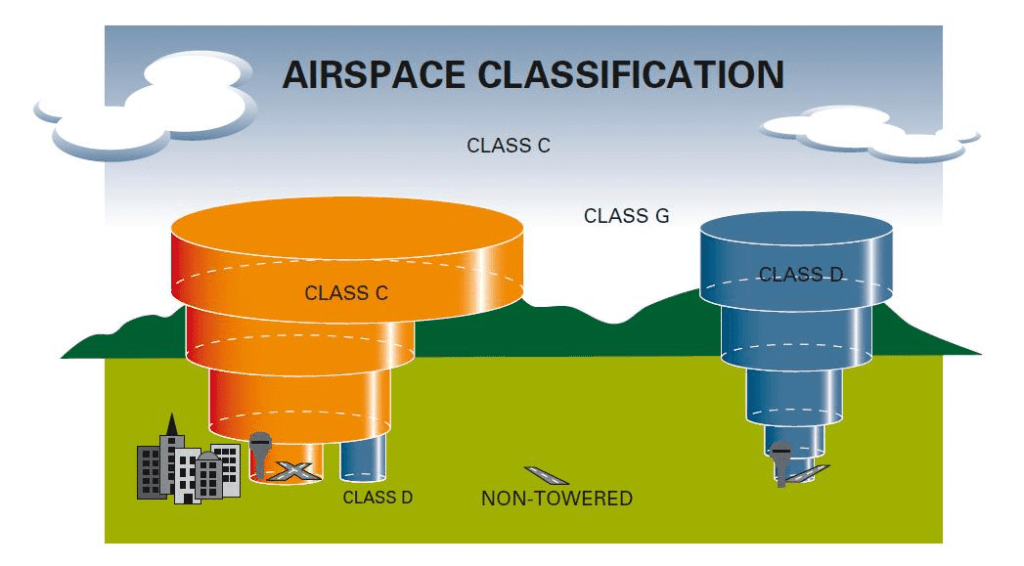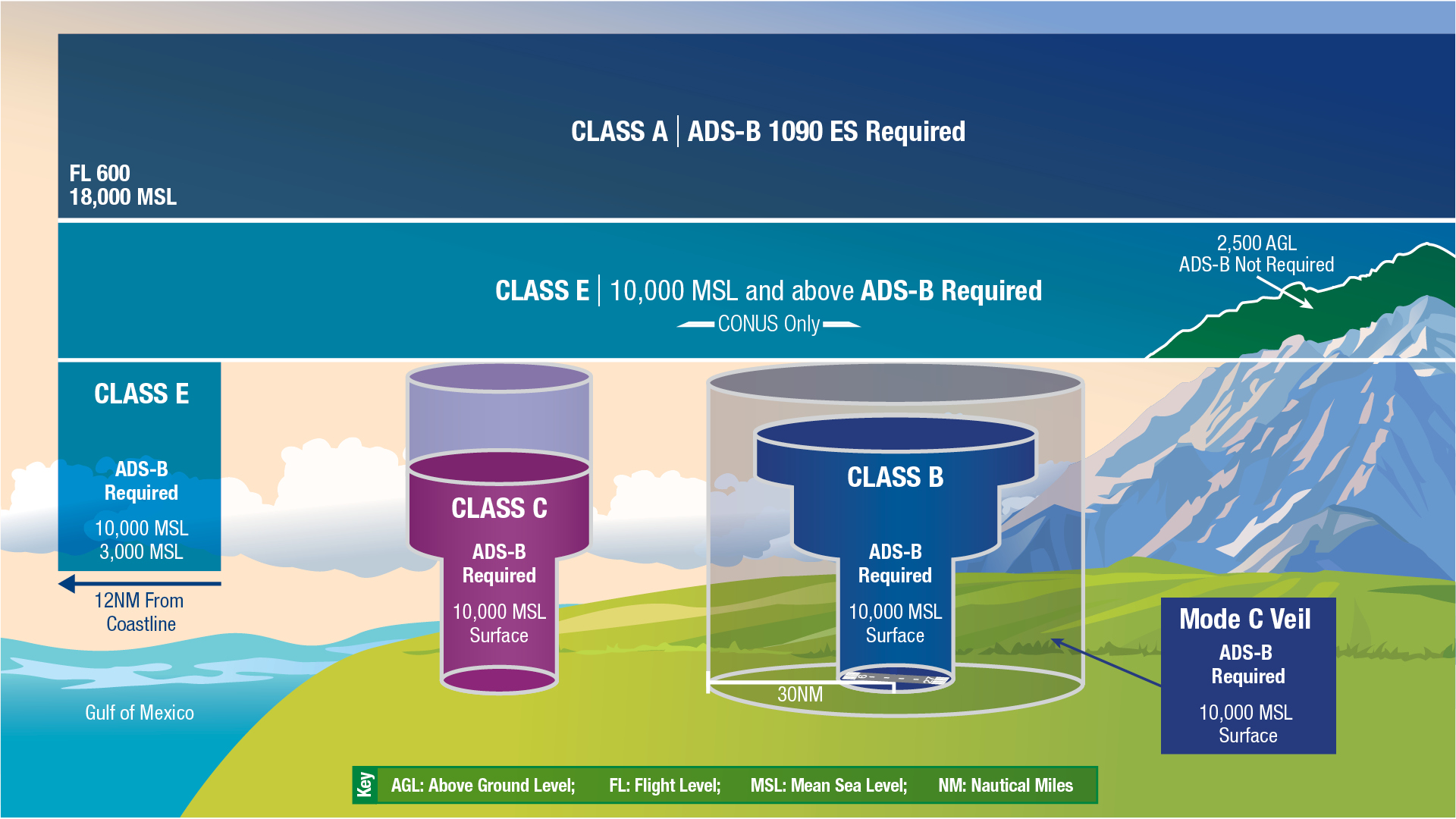class g airspace australia
Airservices Australia last week released a proposal to lower the base of Class E airspace between Cairns and Melbourne to 1500 feet above ground. 14 rows Class G airspace will always start at the ground and go up to 14500 msl as a.

Is Flight Following A Clearance Pilotworkshops
There are three general airspace design models used in Australia.
. IFR flights in Class E get a separation service from other IFR flights but not from VFR flights which dont require a clearance. Class A airspace is the airspace from 18000 feet mean sea level MSL up to and including flight level 600. Benefiting the entire east coast and regional Australia they are leveraging Automatic Dependent Surveillance Broadcast ADS-B and radar surveillance assets to enhance their service delivery.
At the Metropolitan Class D aerodromes formerly GAAP a departure report is not required. Australias non-controlled or CARRYING A RADIO Class G airspace is different to most parts of the world. Class E airspace commonly starts at 700 feet AGL within a 5-mile radius around airports with instrument approach procedures and at other altitudes overlying class G airspace in more remote areas.
Mandatory Radio CTAFs Class RMZ. Surface Class E Airspace. Currently the lower level of the Class E is 8500 feet in most places.
All Classes of Airspace XCSoar. Airspace administration in Australia is generally aligned with the International Civil Aviation Organization ICAOprescribed airspace classes and associated levels of service as set out in Annex 11 to the Convention on International Civil Aviation 1944 Chicago Convention. The surface area of Class E airspace designated for an airport unless that person has prior authorization from Air Traffic Control ATC Small UAS Operating Rules 14 CFR 10741 UAS2019.
Within continental Australia outside radar coverage above FL180 where Class A base is FL245 Within radar coverage in specifc locations or corridors under Class C or Class A airspace. The height of the Control Zone varies for different airports. Airspace which is not defined as controlled airspace is non-controlled In Australia there are five classes of controlled airspace A C D E and GAAP and one non-controlled class G.
There are some minor differences to procedures in Class D airspace. Hazard log prepared by the Airspace Technical Expert Panel 137. Class g airspace australia Monday March 14 2022 Edit.
Airspace which is not Class AE. Operation in class A airspace must be conducted under instrument flight rules IFR except in very specific. Class E airspace is controlled and generally fills in the gaps between the other airspace.
The service is procedural-based. Transition from GAAP to Class D edit Australia used to have a non-standard class of airspace for use at the capital city general aviation airports called a General Aviation Airport Procedures Zone GAAP Zone. In addition Australia has a non-standard class of airspace for use at the capital city general aviation airports called a General Aviation Airport Procedures Zone GAAP Zone.
Class G is used wherever other classes are not - almost always from the surface to the base of the overlying Class A C D or E airspace. Both IFR and VFR aircraft are permitted and neither require ATC clearance. Class D airspace is controlled airspace where an air traffic control service is provided to aerodrome traffic.
At towered airports the class of airspace may change subject to the time of day. Discussion of the risk modelling of Class G airspace in the Airservices Australia Airspace 2000 Safety Case 124 E. Class G is uncontrolled airspace generally underneath and is exclusive of the Class E airspace above it.
Surface Class E Airspace. This 700-foot circle can be identified by a shaded magenta border around those airports on VFR sectional charts. This airspace is uncontrolled.
Primarily this is because non- controlled aerodromes in Australia can experience a high volume of traffic and host a huge diversity of aircraft types. Class G is used wherever other classes are notalmost always from the surface to the base of the overlying Class A C D or E airspace. This includes the airspace within 12 nautical miles from the coast of the 48 contiguous states and Alaska.
For other flights a departure report is only required at. Optional not real airspace. Starts at ground level.
Airspace Classes How Are They Defined Aeroguard Airspace Classes Youtube Picture Of Side View Of Airspace Classes With Vfr Sectional Colors R Flying Ep 35 Class G Airspace Where It Is And How It Works Youtube. At any time this mix might include larger passenger aircraft general aviation aircraft and light sport aircraft. Class A Airspace.
It is proposed to lower the base of Class E airspace to 1500ft AGL in medium and high density enroute airspace between Cairns and Melbourne in 2021. Although Class E airspace is controlled if flying VFR radio communication is not required and neither is a transponder if flying below 10000ft MSL. CTAF North Arrows Class F.
There is no real Class F airspace in Australia so turn off display for Class F if North Arrows NOT required XCSoar. Certain Class D aerodromes where the tower also provides a procedural approach control service see ERSA. In the airspace highlighted below Class E starts at 1200 AGL so Class G automatically starts at the surface and extends to - but doesnt include - 1200 AGL.
The reporting flight planning and operational requirements of your flight can vary significantly depending on what class of airspace you will be operating in so it is important to understand. You should read the procedures outlined in this chapter in conjunction with the controlled airspace procedures. Generally base 8500 ft AMS Surrounding or overlying some CTR Some low-level terminal airspace when the associated TWR is closed.
Within Class G uncontrolled airspace some aerodromes operate a Common Traffic Advisory Frequency CTAF which imposes a requirement for radio to be carried and used but does not affect the operational services or requirements provided by air traffic services. BASI observations on the Airspace 2000 Safety Case risk modelling 134 F. Non-Mandatory Radio CTAFs Class G.
Overview of Airservices Australias Safety Analysis of Airspace 2000 117 D. In restricted airspace aircraft movements are reduced to those with certain specified permissions. All Classes of Airspace LK8000.
Join Online Ground School. Weather Requirements Class G minimum weather requirements exist so that you can see and avoid other aircraft and stay out of the clouds.
Non Controlled Airspace Pilot Practice Exams Com

Which Radio Frequency Should Commercial Drone Pilots Be Using

Australian Airspace Classification System
What Is Meant By Controlled Airspace And Non Controlled Airspace Quora

Airspace Classes Types Of Airspace Classes And How They Are Defined Atp Flight School
Airservices Moves To Modernise Airspace Australian Flying

Amu Led Uam Concept Of Operations Amu Led

Class C Airspace All The Details You Need To Know Pilotmall Com

3 Airspace Classes Courtesy Of U S Department Of Transportation Download Scientific Diagram

The Lines And Dots Show How Various Eurocontrol 2 Uas Classes Operate Download Scientific Diagram

Classification Of Airspace Air Traffic Control Pilot Training Traffic

Lowering Of Class E Airspace In Low Density Continental Areas Engage Airservices

Ep 42 Class A Airspace Explained And Where It Is Youtube
Controlled Airspace Overview Pilot Practice Exams Com
Airservices Proposes Lower Class E For East Coast Australian Flying

Avoiding Collisions In Class G Airspace Z Card Casa Online Store
